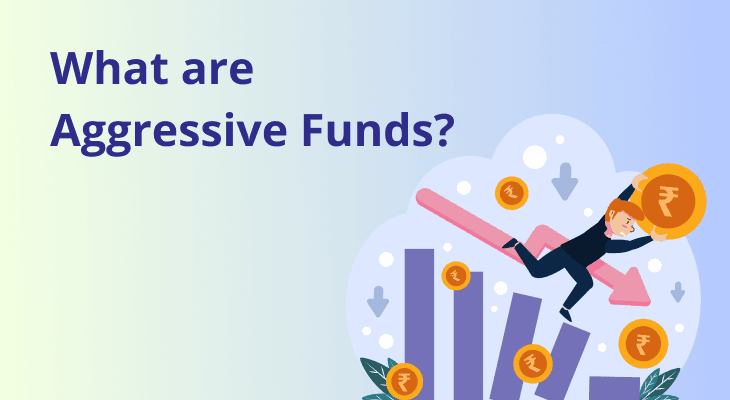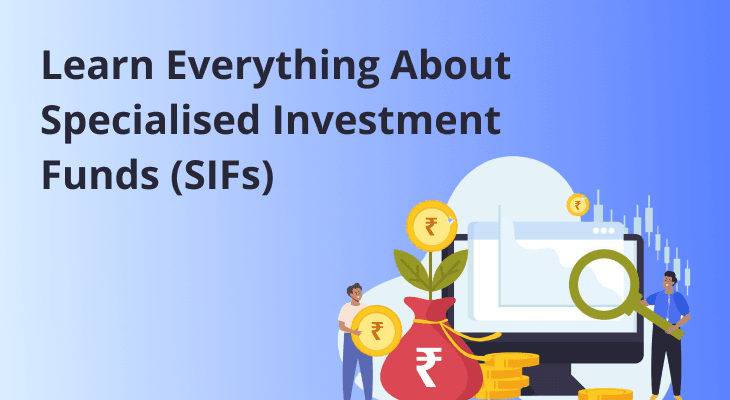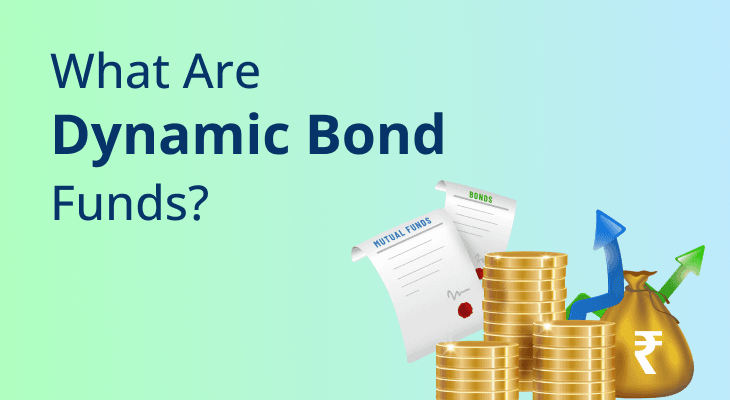
Commodity ETFs Explained: What They Are & Why They Matter?
When inflation bites, markets wobble, and economies run between shocks, investors start looking for something that doesn’t move in lockstep with everything else. That’s where commodities come into the picture. Think gold, oil, silver, natural gas, and even agricultural goods.
But unlike physical commodities that need to be stored, secured, or insured, commodity ETFs offer an easier, cleaner route. That’s why commodity Exchange-Traded Funds (ETFs) are becoming a popular tool in Indian portfolios. They combine the appeal of raw materials with the simplicity of stock-like trading.
But what exactly are commodity ETFs, and why are more retail investors and institutional players turning to them? Let’s break it all down, from the basics to the benefits, risks, and actionable investment tips.
What Are Commodity ETFs?
A commodity ETF is a kind of investment fund that tracks the price of a single commodity (like gold or crude oil) or a basket of commodities (like agricultural goods, energy products, or metals). These funds are listed and traded on stock exchanges, just like any other ETF or equity.
So instead of buying gold bars or barrels of oil, you simply buy units of a fund that mirrors the performance of that commodity. The fund might hold physical commodities, commodity futures, or related assets depending on its structure.
Commodity ETFs are not meant to be your portfolio’s main engine. But they are reliable sidecars. Whether you're shielding wealth from macro shocks, making targeted bets on commodity cycles, or building a well-rounded investment strategy, these instruments serve a clear purpose.
How Do Commodity ETFs Work?
Commodity ETFs replicate the performance of their underlying assets in two main ways:
- Physically-backed ETFs: These funds actually buy and store the commodity (most common with precious metals like gold and silver). When you buy a unit of the ETF, you indirectly own a portion of the physical commodity.
- Futures-based ETFs: Instead of holding the commodity, these ETFs invest in futures contracts. For instance, a crude oil ETF may buy contracts for delivery in the next month, then roll them over before expiration.
- Equity-based ETFs: These funds may hold shares of companies operating in a specific commodity sector (e.g., mining firms, oil producers). This structure adds another layer of risk and correlation with the stock market.
Each type of commodity ETF comes with its own set of pros and cons. Physical ETFs offer direct tracking but may have storage costs. On the other hand, futures ETFs are more flexible but are prone to roll yield losses due to price shifts between contracts.
Types of Commodity ETFs
Commodity ETFs can be broadly classified as follows.
- Single-commodity ETFs: Focus on one specific commodity. Common examples include gold ETFs like Kotak Gold ETF, SBI Gold ETF, and silver ETFs.
- Multi-commodity ETFs: Offer a diversified exposure across multiple commodities like energy, agriculture, and metals. These are more common in global markets.
- Futures-based commodity ETFs: Invest in short-term futures contracts to simulate price exposure without physical delivery.
- Equity-based commodity ETFs: They hold stocks of companies tied to commodity sectors (e.g., coal miners, oil producers).
- Thematic commodity ETFs: These types of ETFs tend to focus on ESG-linked commodities, green energy metals, or inflation-hedging assets.
Additional Read: ETF Vs Mutual Fund: Difference & Which is Better for Investment
Why Commodity ETFs Matter
Commodity ETFs are more than just a niche option. They are a strategic addition to a modern portfolio. Here’s why they’re gaining traction:
- Portfolio diversification: Most investors hold a mix of equities and debt, but commodities move differently, especially during market stress – thus offering true diversification.
- Hedge against inflation: Commodities often outperform other assets when inflation rises. As the cost of goods goes up, so does the value of underlying commodities. This makes them a natural inflation hedge.
- Tactical exposure: You don’t need to understand futures contracts or store physical assets. ETFs provide you this exposure via a demat account.
- Transparent and liquid: Most commodity ETFs trade on exchanges with visible NAVs and order books. You can buy/sell them anytime during trading hours.
- Cost-effective: Compared to buying physical gold or investing directly in commodity futures, ETFs are often cheaper and more accessible.
Who Should Consider Investing in Commodity ETFs?
Commodity ETFs aren’t just for high-risk traders or market veterans. Due to their versatility and accessibility, they can appeal to a wide range of investors.
Whether you're just starting out or managing a mature portfolio, commodity ETFs offer unique advantages tailored to specific investment needs.
#1. New investors looking for safety
For first-time investors or those seeking relative safety, gold ETFs serve as a hedge during economic uncertainty. When equities fall or inflation rises, gold often holds its ground, and may even move up. Take for example, the 2020 pandemic crash. During that period, gold ETFs in India saw significant inflows as investors rushed to safety.
If you are someone who wants protection from such market shocks or rupee depreciation but isn’t ready to buy physical gold, these ETFs offer a paper-based, tax-efficient, and demat-friendly alternative.
#2. Aggressive traders seeking thematic exposure
Commodity markets are highly sensitive to global developments. Oil prices spike during conflicts, silver surges with industrial demand, and agricultural commodities move with monsoon forecasts.
This aspect appeals to aggressive investors, who can use commodity ETFs as tactical plays to capture short-term price movements without venturing into complex futures markets. For example, a trader expecting crude oil prices to rise amid Organization of the Petroleum Exporting Countries (OPEC) supply cuts could take exposure through a relevant ETF or fund tracking global oil benchmarks.
#3. Long-term investors building a resilient portfolio
Commodities often have a low or negative correlation with equities and bonds, making them a strong diversification tool for long-term portfolios. Allocating just 5–10% to commodities can help buffer your investments during stock market corrections or periods of rising inflation.
For instance, while equities struggled in the high-inflation period of 2022, gold and energy commodities delivered positive returns. Thus, long-term investors aiming for stability should view commodity ETFs as a strategic buffer rather than a speculative instrument.
#4. Those with limited capital
Traditionally, investing in commodities required significant capital and complex logistics. For instance, investing in gold required safe storage and entailed delivery risks. But commodity ETFs remove these barriers.
You can now start with as little as a few hundred rupees, buying units of a gold or silver ETF through your demat account. This democratizes access, allowing small-ticket investors to gradually build exposure without needing to commit large sums.
Popular Commodity ETFs in India
As of mid-2025, the Indian market primarily offers gold and silver ETFs to investors. Here is a commodity ETF list of the popular options:
ETF Name | Underlying Commodity | Type | AMC |
|---|---|---|---|
Nippon India ETF Gold BeES | Gold | Physically-backed | Nippon India Mutual Fund |
SBI Gold ETF | Gold | Physically-backed | SBI Mutual Fund |
HDFC Gold ETF | Gold | Physically-backed | HDFC Mutual Fund |
Kotak Gold ETF | Gold | Physically-backed | Kotak Mutual Fund |
ICICI Prudential Silver ETF | Silver | Physically-backed | ICICI Prudential AMC |
Risks and Considerations
Commodity ETFs offer a convenient way to diversify, but they are not without downsides. Before investing, it’s important to understand where things can go south:
1. They have high volatility
Commodity prices can be extremely volatile. Geopolitical events, supply chain disruptions, or sudden shifts in demand can cause sharp price swings, even in relatively stable commodities like gold or silver. If you are not comfortable with large short-term fluctuations, a heavy allocation may be risky.
2. No income generation
Unlike stocks or bonds, commodity ETFs don’t offer dividends or interest. Their returns depend entirely on price appreciation. During flat or bearish phases, your capital remains idle without generating income.
3. Futures-based underperformance
Some commodity ETFs (especially silver) use futures contracts instead of holding the metal directly. Such instruments can suffer from roll yield losses, where shifting from one contract to the next eats into returns. This usually happens when future prices are higher than current ones (a condition known as contango).
4. Tracking error
ETFs that don’t hold the physical commodity may not perfectly mirror price movements. Fund expenses, cash holdings, and the structure of underlying contracts can create a gap between the ETF’s performance and that of the actual commodity.
Conclusion
In today’s unpredictable financial world, a narrow focus on equity and debt may leave you exposed to unexpected shocks. Commodity ETFs add an important third dimension to your portfolio, by bringing stability when markets are shaky and boosting performance during inflationary spikes.
They are accessible, cost-effective, and increasingly relevant for Indian investors. Whether you're looking to hedge, diversify, or tactically trade, commodity ETFs can be a smart addition.
As always, start small, do your homework, and align every investment with a clear objective. Because when uncertainty is the norm, smart diversification is your best defence.
Additional Read: Gold ETF vs Gold Fund: Key Differences & Best Choice in 2025
FAQ
What is a commodity ETF in simple terms?
A commodity ETF is a fund that tracks the price of a commodity (like gold or oil) and trades on the stock exchange just like a stock.
Is investing in commodity ETFs safe?
While commodity ETFs offer diversification and inflation protection, they also come with risks like price volatility. While they're safer for less experienced investors than F&O trading, they still need careful selection.
Can I buy commodity ETFs through my regular demat account?
Yes, you can buy and sell commodity ETFs through your demat account just like stocks.
How is a gold ETF different from buying physical gold?
Gold ETFs don’t require storage, offer better liquidity, and are typically cheaper than physical gold after accounting for making charges and GST.
Do commodity ETFs pay dividends?
No. Since commodities don’t generate income, commodity ETFs will not pay dividends either.
Are there tax benefits to investing in commodity ETFs?
Yes, commodity ETFs like gold and silver are taxed as non-equity assets. Long-term gains (after 12 months) are taxed at 12.5% without indexation, and short-term gains (holding period less than 12 months) are taxed as per your income slab rate.
How much of my portfolio should I allocate to commodity ETFs?
A 5–10% allocation is common for diversification. Anything beyond that should be based on specific goals or vetted opportunities.


